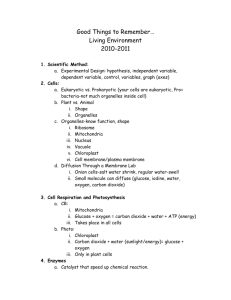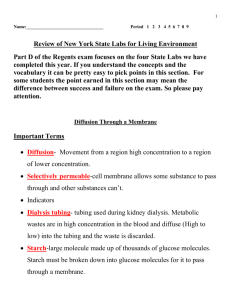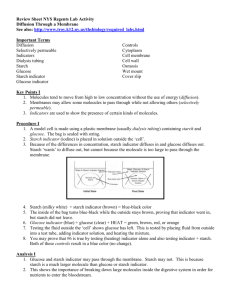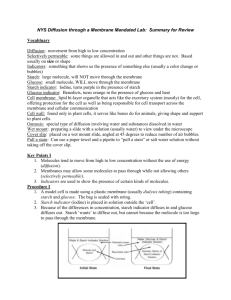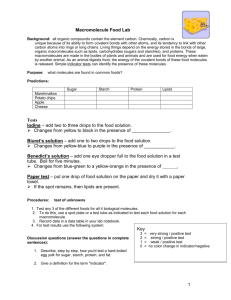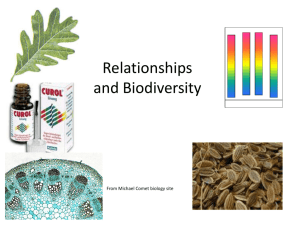Key Points - Saunders Trades and Technical High School
advertisement
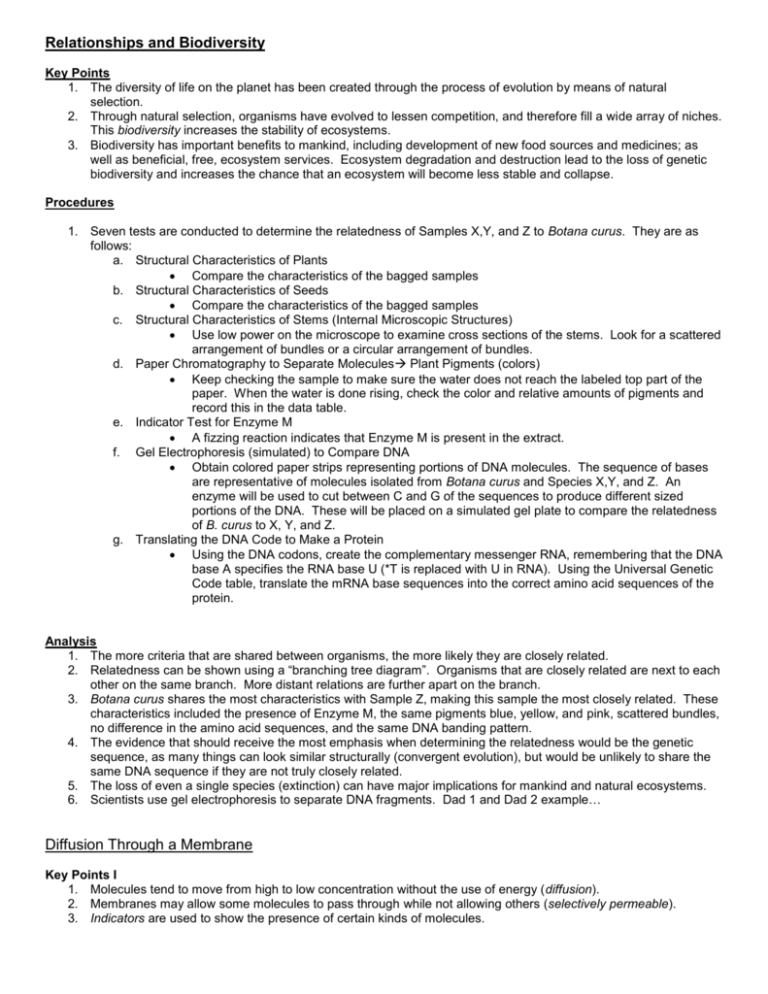
Relationships and Biodiversity Key Points 1. The diversity of life on the planet has been created through the process of evolution by means of natural selection. 2. Through natural selection, organisms have evolved to lessen competition, and therefore fill a wide array of niches. This biodiversity increases the stability of ecosystems. 3. Biodiversity has important benefits to mankind, including development of new food sources and medicines; as well as beneficial, free, ecosystem services. Ecosystem degradation and destruction lead to the loss of genetic biodiversity and increases the chance that an ecosystem will become less stable and collapse. Procedures 1. Seven tests are conducted to determine the relatedness of Samples X,Y, and Z to Botana curus. They are as follows: a. Structural Characteristics of Plants Compare the characteristics of the bagged samples b. Structural Characteristics of Seeds Compare the characteristics of the bagged samples c. Structural Characteristics of Stems (Internal Microscopic Structures) Use low power on the microscope to examine cross sections of the stems. Look for a scattered arrangement of bundles or a circular arrangement of bundles. d. Paper Chromatography to Separate Molecules Plant Pigments (colors) Keep checking the sample to make sure the water does not reach the labeled top part of the paper. When the water is done rising, check the color and relative amounts of pigments and record this in the data table. e. Indicator Test for Enzyme M A fizzing reaction indicates that Enzyme M is present in the extract. f. Gel Electrophoresis (simulated) to Compare DNA Obtain colored paper strips representing portions of DNA molecules. The sequence of bases are representative of molecules isolated from Botana curus and Species X,Y, and Z. An enzyme will be used to cut between C and G of the sequences to produce different sized portions of the DNA. These will be placed on a simulated gel plate to compare the relatedness of B. curus to X, Y, and Z. g. Translating the DNA Code to Make a Protein Using the DNA codons, create the complementary messenger RNA, remembering that the DNA base A specifies the RNA base U (*T is replaced with U in RNA). Using the Universal Genetic Code table, translate the mRNA base sequences into the correct amino acid sequences of the protein. Analysis 1. The more criteria that are shared between organisms, the more likely they are closely related. 2. Relatedness can be shown using a “branching tree diagram”. Organisms that are closely related are next to each other on the same branch. More distant relations are further apart on the branch. 3. Botana curus shares the most characteristics with Sample Z, making this sample the most closely related. These characteristics included the presence of Enzyme M, the same pigments blue, yellow, and pink, scattered bundles, no difference in the amino acid sequences, and the same DNA banding pattern. 4. The evidence that should receive the most emphasis when determining the relatedness would be the genetic sequence, as many things can look similar structurally (convergent evolution), but would be unlikely to share the same DNA sequence if they are not truly closely related. 5. The loss of even a single species (extinction) can have major implications for mankind and natural ecosystems. 6. Scientists use gel electrophoresis to separate DNA fragments. Dad 1 and Dad 2 example… Diffusion Through a Membrane Key Points I 1. Molecules tend to move from high to low concentration without the use of energy (diffusion). 2. Membranes may allow some molecules to pass through while not allowing others (selectively permeable). 3. Indicators are used to show the presence of certain kinds of molecules. Procedure I 1. A model cell is made using a plastic membrane (usually dialysis tubing) containing starch and glucose. The bag is sealed with string. 2. Starch indicator (iodine) is placed in solution outside the ‘cell’. 3. Because of the differences in concentration, starch indicator diffuses in and glucose diffuses out. Starch ‘wants’ to diffuse out, but cannot because the molecule is too large to pass through the membrane. 4. Starch (milky white) + starch indicator (brown) = blue-black color 5. The inside of the bag turns blue-black while the outside stays brown, proving that indicator went in, but starch did not leave. 6. Glucose indicator (blue) + glucose (clear) + HEAT = green, brown, red, or orange 7. Testing the fluid outside the ‘cell’ shows glucose has left. This is tested by placing fluid from outside into a test tube, adding indicator solution, and heating the mixture. Analysis I 1. This shows the importance of breaking down large molecules like starch inside the digestive system into glucose so that the nutrients can enter the bloodstream. Key Points II 1. Basic parts of the cell that are easily seen under the microscope are the cytoplasm, cell membrane, and cell wall (in plants). 2. Molecules tend to move from high to low concentration without the use of energy (diffusion). 3. Diffusion of water molecules is particularly important and has the special name of osmosis. 4. The balance of water molecules inside and outside the cell is extremely important for the survival of all organisms, including humans. This balance is part of keeping HOMEOSTASIS. Procedure II 1. Make a wet mount slide of a thin section of red onion cells. The cells are taken from the outer ‘skin’ of the onion bulb and a small piece is placed in a drop of water on a microscope slide. A cover slip is placed on top by touching it to the water at an angle, and then carefully placing it on the specimen, trying not to get air bubbles underneath. 2. The cells are examined under the light (compound) microscope. You should be able to identify the cytoplasm, cell membrane, and cell wall. 3. It is important to see that the cell membrane and cytoplasm completely fill the space within the cell wall. 4. Place a 10% salt solution under the cover slip. This is done by putting a drop of salt solution next to one edge of the cover slip, then absorbing water from the opposite side of the slip using a paper towel. 5. Observe the cells in the salt solution. It is important to see that the cytoplasm and cell membrane have shriveled up inside the cell wall. This is due to water molecules leaving the cell and entering the salty (low water) solution. 6. Place distilled water under the cover slip using the technique described in #4 above. 7. Observe the cells in distilled water. It is important to see that the cytoplasm and cell membrane have swollen back to fill the entire space available within the cell wall. Analysis II 1. Cells placed in very salty solutions will lose water, causing them to collapse and possibly lose the ability to complete life functions. DEHYDRATION 2. Cells placed in very watery solutions will tend to gain water, which causes them to swell and might cause them to burst/break open, destroying the cell. Note that this did not happen in the plant cells because the cell wall prevents the cell membrane from easily expanding. The Beaks of Finches Key Points 1. Species evolve over time. Evolution is a result of the interactions between: a. The potential for a species to increase its population b. Genetic variation of offspring due to mutation and sexual reproduction c. A limited amount of resources in the environment (ex. food, space, mates, etc.) d. Selection by the environment of those individuals that are better able to survive and produce offspring (“survival of the fittest”) 2. Some characteristics / variations give individuals an advantage over others in surviving and reproducing. The offspring of these “better adapted” individuals will be more likely to survive and reproduce than those of other individuals. Over time the amount of individuals with good characteristics will increase. 3. Variation in a population increases the chance that at least some individuals will survive the changing environmental conditions. This is another reason why BIODIVERSITY is important. Analysis 1. Those individuals with beaks best adapted for feeding on small seeds remained on the island at the end of Round One while those with “less adapted” beaks migrated to a new island. 2. Competition for food in Round Two should have made it harder to get enough food to survive. 3. There were fewer survivors at the end of Round Three due to increased competition. 4. The following four components of Natural Selection were simulated: a. b. c. d. e. f. Variation: different beaks, different size seeds Competition: more than one bird feeding at one bowl Struggle for survival: each bird trying to get enough food to survive Adaptation: particular characteristics of “beaks” Environment: students, seeds, dishes are part of environment Selecting agent: type of “beak” and / or type of seed available Making Connections Key Points 1. Pulse rate is the measure of the rate at which your heart is pumping. When exercising your pulse rate increases to supply muscles with more blood which is carrying oxygen. At the same time your breathing rate increases to supply your blood with more oxygen. 2. When your muscles experience fatigue after exercise…there is a lack of oxygen and a build up of lactic acid creating a burning sensation. With rest the body will break down this lactic acid and your muscles will return to normal 3. In order to maintain HOMEOSTASIS your Circulatory, Respiratory and Musculatory system must work together Creating an experiment -Hypothesis must be stated as IF…….THEN….. If I exercise first then I will be able to squeeze the clothespin faster -Variables much be noted Controlled Variables- Amount of…..water, sunlight, soil, Dependent Variable- Changes depending on the independent Independent Variable- What you are measuring Paper Towel Experiment CV- Amount of water DV- Water absorbed IV- Brand of paper towel WINNER: Bounty
